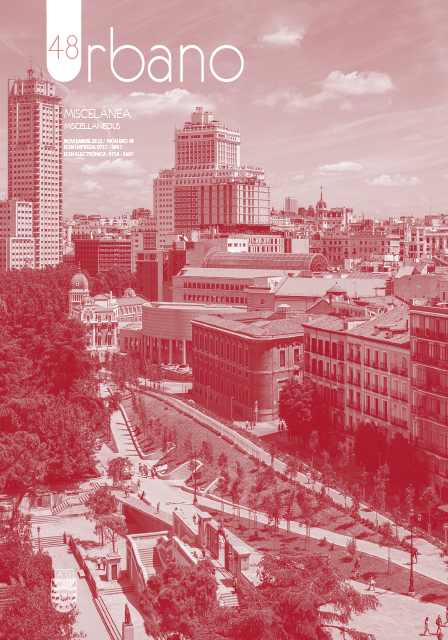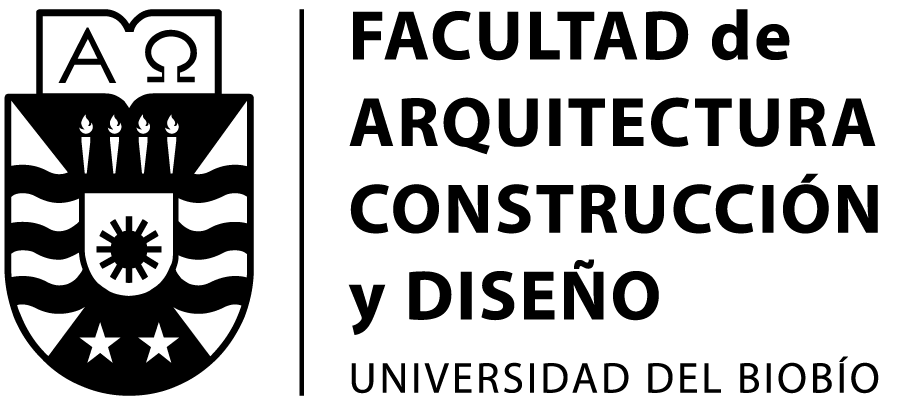Spatiality of social memories associated with the dictatorship (1973 - 1990) in the Concepción Metropolitan Area (CMA), Chile
DOI:
https://doi.org/10.22320/07183607.2023.26.48.06Keywords:
public space, cartography, memories, violation of human rightsAbstract
The Metropolitan Area of Concepción (MAC) was one of the hardest hit areas by political represión and human right violations during the dictatorship. Despite the impact of it, the urban development of las decades has been erasing the materialness of memories linked with the period. Emerging the neediness to map places of memory to dimension and territorially understand them, through geolocation and analysis of its spatiality and territorial distribution. In this regard, a wide distribution of spaces is identified that can be defined as "silenced places" and "places made invisible by daily life". In fact, a disproportion is observed between the quantity of events of political violence and violations of human rights and the scarcity of public spaces that account for these events. Also, it is relevant to verify a certain inadequacy of the existing spaces for contemporary development of memory practices, both in urban and architectural terms, raising questions about how social memories linked to the dictatorship are currently crystallized.
Downloads
References
AUGÉ, M. (2000). Los no lugares, espacios del anonimato: una antropología de la sobremodernidad. Gedisa.
Comisión Nacional de Verdad y Reconciliación. (1996). Informe Comisión Rettig. Gobierno de Chile. https://bibliotecadigital.indh.cl/items/edb83a4d-9121-48ee-8e66-09fe31e926fe
Comisión Nacional sobre Prisión Política y Tortura. (2004). Informe Comisión Valech. Gobierno de Chile. https://bibliotecadigital.indh.cl/items/77e102d5-e424-4c60-9ff9-70478e618d78
FLORES-KANTER, P., & MEDRANO, L. A. (2019). Núcleo básico en el análisis de datos cualitativos: pasos, técnicas de identificación de temas y formas de presentación de resultados. Interdisciplinaria, 36(2), 203–215. https://doi.org/10.16888/interd.2019.36.2.13
FRITZ, C. (2017). El Morro. Centro Clandestino de Torturas. Documental audiovisual financiado por el FNDR Subvención Cultura de 2016, Región del Bío-Bío. https://www.youtube.com/watch?v=ELtmFluqHYU
GUGLIELMUCCI, A., & LÓPEZ, L. (2019). Restituir lo político: los lugares de memoria en Argentina, Chile y Colombia. Kamchatka. Revista de análisis cultural, (13), 31-57. https://doi.org/10.7203/KAM.13.12409
HALBWACHS, M. (2004). La memoria colectiva. Prensas Universitarias de Zaragoza.
JELIN, E. (2021). Los trabajos de la memoria. Fondo de Cultura Económica.
LEFEBVRE, H. (2013). La producción del espacio. Capitán Swing Libros.
NORA, P. (2009). Pierre Nora en Les lieux de mémoire. LOM Ediciones.
MATURANA, I., & DOMÍNGUEZ, O. (2012). Arquitectura de la memoria trágica y los derechos humanos [Tesis de pregrado]. Universidad del Bío-Bío. https://bibliotecadigital.indh.cl/items/fa498550-0735-4238-8573-1d2d95d5e343
MONTAÑEZ, G., & DELGADO O. (1998). Espacio, territorio y región: conceptos básicos para un proyecto nacional. Cuadernos de Geografía, VII(1-2), 120-134. https://revistas.unal.edu.co/index.php/rcg/article/view/70838
OLEA, R., PEÑA, M., & SALDÍA, M. (2017). Lugares pencopolitanos, Memorias en Dictadura. Nómada Sur Ediciones.
RABÉ, A. (2011). El arte y la creación de futuras memorias: Monumento e intervención artística en espacios urbanos. En O. Faustino & M. Cantarino (Eds.), Estética de la memoria (pp. 159-192). Universidad de Valencia.
REBOLLEDO, D. (2022). Memorias en la ciudad: la integración de sitios de conciencia en el territorio como patrimonio urbano. En X. Faúndez, D. Abarca, C. Sánchez & O. Sagredo (Eds.), Lugares de memoria y sitios de conciencia: construyendo patrimonio y memoria para la acción en derechos humanos (pp. 41-58). Universidad de Valparaíso.
Salazar, G., & Pinto, J. (2002). HISTORIA CONTEMPORÁNEA DE CHILE III: LA ECONOMÍA: MERCADOS, empresarios y trabajadores. LOM Ediciones.
SANTA CRUZ, E.J.C. (2018). Gestión del patrimonio carbonífero en contextos recesivos: del sitio aislado a la cuenca minera. Una reflexión a partir de las experiencias de las cuencas Concepción-Arauco en Chile y Nord-Pas de Calais en Francia. Revista EURE, 44(132), 263-287. https://doi.org/10.4067/s0250-71612018000200265
TESCHE, P., MERA, M., VILLAGRÁN, G., & GARRIDO, A. (2018). Memoria histórica y derechos humanos en Concepción-Chile: lugares e imaginarios locales vividos. Revista Colombiana de Ciencias Sociales, 9(2), 383-402. https://doi.org/10.21501/22161201
TESCHE, P., ANTONIO, A., & PÁEZ, D. (2023). Factores asociados por los tipos de memorias evocadas por tres lugares de la comuna de Concepción, Biobío, Chile. PSYKHE, 1-16. https://doi.org/10.7764/psykhe.2020.22423
ŽIŽEK, S. (1994). Ideología: Un mapa de la cuestión. Paidós.
Downloads
Published
How to Cite
Issue
Section
License
Copyright (c) 2023 Paula Isabel Tesche-Roa, Juan Carlos SantaCruz-Grau, Verónica Marianela Esparza-Saavedra, Jordana María José García-Hernández

This work is licensed under a Creative Commons Attribution-ShareAlike 4.0 International License.
The content of articles which are published in each edition of Habitat Sustentable, is the exclusive responsibility of the author(s) and does not necessarily represent the thinking or compromise the opinion of University of the Bio-Bio.
The author(s) conserve their copyright and guarantee to the journal, the right of first publication of their work. This will simultaneously be subject to the Creative Commons Recognition License CC BY-SA, which allows others to share-copy, transform or create new materials from this work for non-commercial purposes, as long as they recognize authorship and the first publication in this journal, and its new creations are under a license with the same terms.![]()























